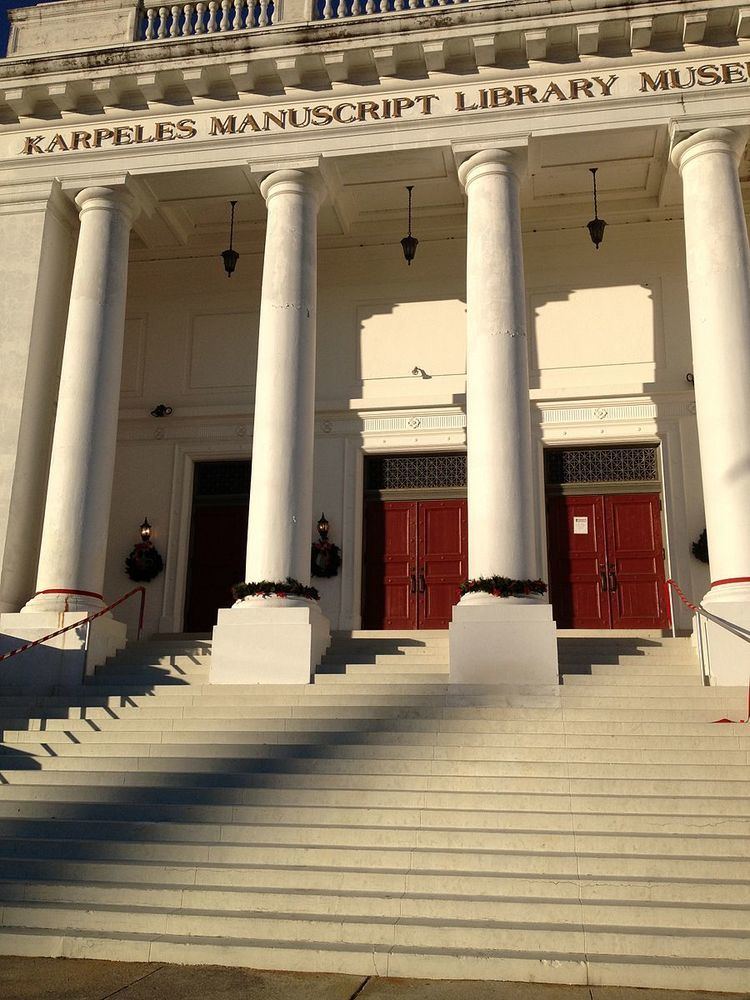Established 1992 Built 1921 Phone +1 904-356-2992 Architecture firm Marsh & Saxelbye Function Museum | Website rain.org/karpeles Designated CP June 24, 1986 Architectural style Neoclassical architecture Founded 1992 | |
 | ||
Public transit access Bus: L8, L7,Monorail: Rosa L. Parks Station Northbank Line Southbank Line Address 101 W 1st St, Jacksonville, FL 32206, USA Hours Open today · 10AM–3PMFriday10AM–3PMSaturday10AM–4PMSundayClosedMondayClosedTuesday10AM–3PMWednesday10AM–3PMThursday10AM–3PM Similar Tree Hill Nature Center, Jacksonville Fire Museum, Veterans Memorial Wall, Alexander Brest Museum, St Andrew's Episcopal | ||
The Karpeles Manuscript Library Museum is a museum in Jacksonville, Florida, one of ten Karpeles Manuscript Library Museums in the United States. It displays manuscripts and documents from the private collection of David and Marsha Karpeles, the world's largest such collection, as well as art exhibits.
Contents
The museum opened in 1992 in the former First Church of Christ, Scientist building in Jacksonville's Springfield neighborhood. The Classical Revival structure, constructed in 1921, is a contributing property in the Springfield Historic District and is listed as No. SP-61 by the Jacksonville Historic Landmarks Commission.
Building
The first Christian Science services in Jacksonville were held in 1892 and First Church of Christ, Scientist was organized in 1897. It met at several locations in Jacksonville before acquiring the property that would be its permanent home in the Springfield area in 1921. The building, located at 101 West 1st Street (formerly 1116 North Laura Street), was built in the Classical Revival style. A contributing building in the Springfield Historic District, it is listed as No. SP-61 by the Jacksonville Historic Landmarks Commission.
In 1992 the congregation sold the building to David Karpeles. After the sale the church was voluntarily dissolved August 10, 1993.
Karpeles Museum
The Jacksonville Karpeles Manuscript Library Museum opened in 1992. It is privately owned by David Karpeles, a former math professor who had made millions investing in real estate and then taken up manuscript collecting. In 1983 he began opening museums across the country to house his collection, now the world's largest. The museum features three or four exhibits from Karpeles' collection a year, as well as exhibits from other collectors and around six art exhibits.
